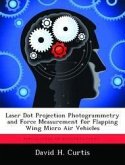The development and use of Micro Air Vehicles is becoming more and more important to the military. Size, weight, maneuverability, stealth, and fuel consumption are just some of the constraints on a future Micro Air Vehicle. Perfect blueprints for a small scale flying machine are both insects and humming birds. Medium sized hummingbirds are found to have wings-beats at a frequency of 18-28 Hz. There is a vast amount of complexity to just how these creatures can create lift; however, this study looks at different beams made of common materials with 1st natural bending frequencies in this range. This study documents and evaluates the use of analytical tools to solve for nonlinear characteristics of a system. A function called the backbone curve is incorporated into a MATLAB program. The Hilbert transform characterized by the nonlinear decrement approach captures all of the necessary coefficients for this function. ABAQUS/CAE is relied upon. The numerical finite element results are compared to experiments. This work gives a better understanding of how materials and geometry perform when used in Micro Air Vehicle design considering large displacements.








